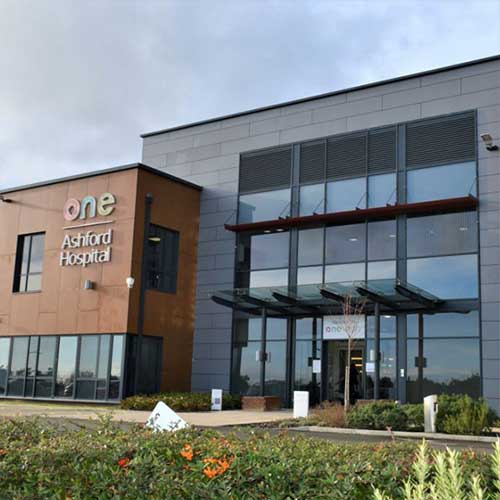Benign Scrotal Lump Surgery
A scrotal lump, or mass is an abnormal bulge or lump inside the scrotum. The scrotum is a sac of skin that hangs from the front of the body, containing the testicles. The scrotum sits outside of the body as it needs to maintain a slightly lower temperature than the rest of the body to help maintain sperm production. The scrotum also protects the testicles and major blood vessels, as well as the tubes that release sperm from the testicles into the penis for ejaculation.
A scrotal lump can be a swollen testicle or it can contain fluid or other tissue. Although it is possible that the mass can be a tumour (cancerous), the majority of cases are benign (non-cancerous).
Causes of Scrotal Lumps
A number of conditions can cause scrotal lumps. These include:
Hydrocele
This occurs when one of the naturally occurring sacs that surround each testicle fills with fluid. This type of lump occurs in approximately 5% of newborn babies, with premature babies being at greater risk of developing the condition. The sacs normally contain just a small amount of fluid, but if it collects, swelling can occur.
Epididymal Cyst
An epididymal cyst occurs when the coiled tube behind the testicles (epididymis) becomes filled with fluid that is unable to drain. This is a very common cause of testicular lumps and will often resolve on its own without the need for treatment. The cyst can also contain sperm, known as a spermatocele.
Varicocele
A varicocele is a collection of enlarged veins or blood vessels in the scrotum. This is generally caused because the valves of the small veins in the scrotum do not function well. There are one-way valves at intervals along the veins, and they open to allow blood to flow towards the heart; they then close when blood flow slows to stop blood flowing backwards. When the valves do not work well, blood can flow backwards and pool in the lower parts of the vein to form a varicocele (similar to how varicose veins form in the legs).
This is the most common cause of scrotal lumps and occurs in approximately 15-20% of men.
Epididymitis
This is an inflammation of the epididymis and is usually caused by a bacterial infection. Sexually transmitted diseases (STDs) are common infections that cause this condition, such as gonorrhoea and chlamydia.
Orchitis
Orchitis is caused by infections that inflame the testicle. Bacteria or the mumps virus are common causes of infection.
Testicular Torsion
This condition occurs when the testicles become twisted, usually after an accident or injury. It can occur in men of all ages, but is most common in boys aged 13-17 years. It is considered a medical emergency and requires immediate attention and possible treatment. If left untreated, it can lead to testicle death and infertility.
Testicular Cancer
Although rare, some lumps can be an indication of testicular cancer. It is the most common cancer in men aged 15-44 years old, with about 2,000 new cases in the UK each year. Approximately half of all cases appear in men under the age of 35, although it rarely occurs before puberty.
Symptoms of Scrotal Lumps
Nearly all causes of scrotal lumps cause swelling, but symptoms can vary. If you experience any of the following, contact your doctor to arrange a consultation:
- A dull ache in the scrotum
- A feeling of heaviness in the scrotum
- Scrotal swelling that gets more noticeable throughout the day
- Abdominal pressure
- A visible swelling of the testicles
- Pain and tenderness
- Nausea and vomiting
- Fever
- Frequent urination
- Warmness or redness in the scrotum
- Abdominal or lower back pain
- A lump in the testicle
- Swollen or tender breast tissue
Diagnosing a Scrotal Lump
Your doctor will take a medical history and discuss the symptoms you are experiencing and how long you have had them for. Be sure to provide as much information as possible, including whether you have had any recent injuries.
You will then be given a physical examination to check for swelling and tenderness. Most lumps can be diagnosed during a physical examination, either through feeling the lump, or by shining a light through your scrotum that will highlight where there is a build-up of fluid. If your doctor feels you may need further tests to diagnose your condition, you will likely be referred for an Ultrasound scan and blood tests to determine if you require any treatment. An ultrasound scan is a painless examination that uses soundwaves to create images of organs and structures inside your body.
Treatment of a Scrotal Lump
Antibiotics can treat bacterial infections causing scrotal lumps, meaning you are unlikely to require any further treatment. If you have a viral infection, the best course of treatment is rest and pain medication.
If the lump is benign, not too large and causing you no severe pain or discomfort, you may not require treatment. However, if it is fairly large and causing pain that is affecting your day-to-day life, your doctor will discuss the option of having the lump removed surgically.
The type of surgery required generally depends on the condition and cause of the lump.
Hydrocele
Treatment for a hydrocele lump involves making a small incision in the scrotum to drain the excess fluid.
Epididymal Cyst
The surgeon will remove the epididymal cyst and seal the scrotum with stitches that usually dissolve within 1-2 weeks.
Varicocele
Surgery involves tying off the affected veins or diverting blood flow to those veins through other methods. This then causes the blood to bypass those veins and eliminate swelling.
Testicular Torsion
This condition requires immediate surgery to untwist the testicle and restore blood flow. If treatment is not received within 6 hours, the testicle will die and the doctor will have to remove it surgically.
Post-Operative Recovery
All surgical procedures for the removal of benign scrotal lumps are carried out on an outpatient basis, so you will be allowed to return home the same day, provided you do not experience any complications. If you had a general anaesthetic, you will need to wait for this to wear off before you can leave.
Strenuous exercise like running or riding a bike should be avoided for 5-7 days, although most men can return to normal activities after 2-4 weeks.
Risks and Complications
Benign scrotal lump surgery is considered a safe procedure, but as with all invasive surgery, there are associated risks. These include:
- Difficulty passing urine
- Pain
- Bleeding
- Reduced fertility
- Infection at the wound site
Outlook
Most men make a good recovery from benign scrotal lump surgery, although it is important to be aware that lumps can come back.
As it is impossible to self-diagnose the cause of a scrotal lump, it is important to make an appointment to see your GP if you notice any changes, including swelling and pain in the testicles.
Need Help?
At One Healthcare we can book you in to see a specialist Urology surgeon, usually within 48 hours, for an initial consultation. Benign Scrotal Lump Surgery is available at One Ashford Hospital in Kent and One Hatfield Hospital in Hertfordshire.
You can use your private medical insurance or pay for your Benign Scrotal Lump Surgery treatment. We offer competitive, fixed price packages. If you are using your health insurance, please contact your insurer first for approval and let them know you’d like to be treated at either the One Ashford Hospital or One Hatfield Hospital.
Why One Healthcare
- Modern purpose-built hospital opened in March 2016 (Ashford) December 2017 (Hatfield)
- Fast access to diagnostics including MRI, X-ray and Ultrasound
- 0% and low finance options**
- Private, spacious, en-suite rooms
- Specialist Physiotherapy and nursing teams
- Little or no waiting time
- ‘Ultra clean air’ theatres
- Freshly prepared food
- Calm, dignified experience
**Terms and conditions apply
Contact us and find out more
If you live in and around the Kent area and would like to visit our One Ashford Hospital please click here
If you are based in and around Hertfordshire and would like to visit the One Hatfield Hospital please click here.
Consultant Specialists
Contact the Hospital About Benign Scrotal Lump Surgery
Choose a Hospital

01233 423 000
One Ashford, Kennington Road, Willesborough, Ashford, Kent, TN24 0YS
One Ashford Hospital

 One Ashford
One Ashford One Hatfield
One Hatfield